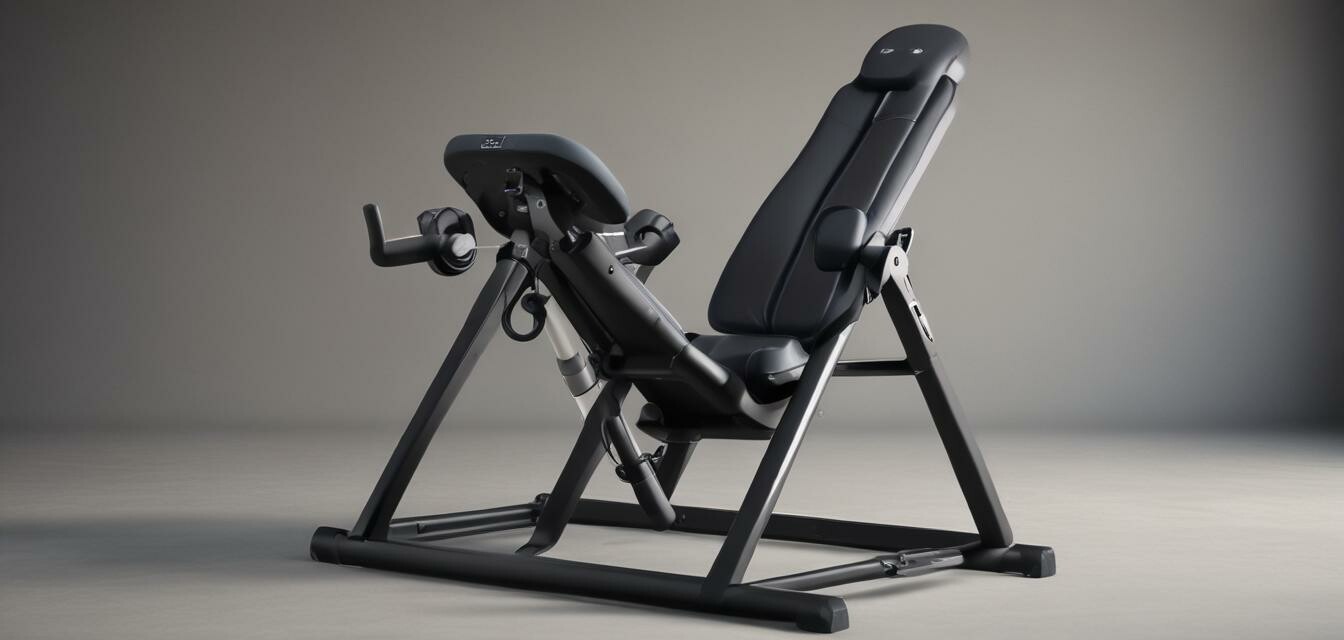
Common mistakes to avoid when using inversion tables
- Understand the importance of starting at a low angle for beginners.
- Always secure yourself properly to prevent falls.
- Do not exceed the recommended time for inversion.
- Listen to your body and adjust the settings accordingly.
- Consult with a fitness professional if uncertain about your technique.
Inversion tables have gained immense popularity for their ability to help individuals alleviate discomfort and enhance their overall well-being. However, beginners often make common mistakes that can detract from their experience. Understanding these pitfalls will ensure that you make the most out of your time on the table while maximizing safety. This article will discuss mistakes to avoid when using inversion tables and provide you with useful tips for a better, safer experience.
1. Skipping the setup instructions
Each inversion table comes with specific setup instructions that are crucial for its safe and effective use. Ignoring these guidelines can lead to improper use, which may result in injury.
Key setup steps include:
- Assemble the table following the manufacturer’s instructions.
- Adjust the height settings according to your height.
- Familiarize yourself with the locking mechanism.
2. Not securing yourself properly
A common mistake beginners make is failing to secure themselves adequately before inverting. Loose straps or harnesses increase the risk of slippage.
Here’s how to secure yourself properly:
- Ensure the ankle straps or support is tightly secured.
- Adjust for comfort but make sure there’s no room for movement.
- Check the locking mechanism of the inversion table before use.
3. Inverting too quickly
Taking the plunge into full inversion too quickly can lead to dizziness or discomfort. It is essential to ease into it gradually.
Recommended approach:
- Start at a slight angle (15-30 degrees).
- Gradually increase your angle as you become more comfortable.
- Monitor how your body reacts during the process.
4. Ignoring recommended time limits
Overexerting yourself can negate the benefits of inversion therapy. Many users exceed the recommended time limits without realizing the potential consequences.
Typical session guidelines include:
- Start with 1-2 minutes per session.
- Increase gradually, but do not exceed 5-10 minutes.
- Take breaks if your body feels strained or uncomfortable.
5. Not listening to your body
Every individual is different, and it’s crucial to pay attention to how your body responds during your inversion sessions. Ignoring discomfort can lead to serious issues.
Signs to look out for:
- Dizziness or lightheadedness.
- Sharp pain or discomfort in the back or joints.
- Difficulty adjusting to the inversion position.
6. Failing to consult with a professional
If you’re new to inversion therapy or have existing health concerns, consulting with a certified fitness professional can provide valuable insights.
Benefits of professional advice:
- Personalized recommendations based on your fitness level.
- Guidance on proper form and techniques.
- Advice on suitable brands or models based on your needs.
7. Neglecting maintenance of your inversion table
Regular maintenance is key to ensuring the longevity and functionality of your inversion table. Neglecting this could lead to malfunctioning components.
Maintenance tips include:
- Check for loose screws or parts before every use.
- Clean the surface and fabric to remove sweat and debris.
- Lubricate any moving parts as recommended by the manufacturer.
Conclusion
Using an inversion table can be highly beneficial for your fitness regimen, but it’s important to avoid common mistakes that can result in injury or ineffective use. By following the guidance specified in this article, you can enjoy a safer and more effective inversion therapy experience.
Pros
- Can lead to improved flexibility.
- Assists in alleviating tension in the back.
- Easy to use with proper guidance.
Cons
- Requires proper setup to be effective.
- Can lead to discomfort if not used correctly.
- Not suitable for everyone (consult a professional).
Tips for beginners
As a novice, always take it slow. Familiarize yourself with the equipment, listen to your body, and don’t hesitate to seek assistance if needed. Remember, safety should always come first!
To further enhance your understanding and skills, consider checking some of our other articles on fitness tips, or browse through our inversion table products for insights on choosing the right equipment for your needs.